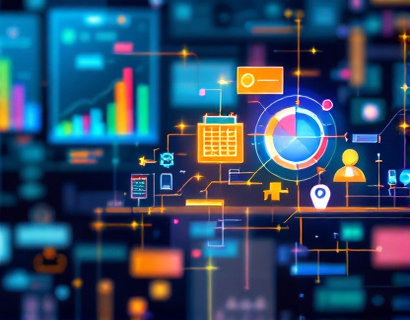AI-Powered Mental Health Insights: Navigating Psychiatric Services and Industry Knowledge for All Users
In recent years, the integration of artificial intelligence in mental health services has opened new avenues for providing specialized insights and support to a diverse audience. This article explores how an AI-driven chatbot can serve as a valuable resource for individuals seeking information about psychiatric services and the mental health industry. The focus is on ensuring that the content provided is accurate, safe, and accessible to various user groups, including children, students, educators, and healthcare professionals. By leveraging AI technology, this platform aims to foster confident and responsible engagement with mental health topics.
Understanding the Need for AI in Mental Health
The mental health landscape is complex and ever-evolving, making it challenging for individuals to navigate the available services and information. Traditional methods of seeking help often involve lengthy searches, misinformation, and barriers to access. AI-powered chatbots address these challenges by offering immediate, accurate, and personalized insights. These chatbots can understand natural language queries, provide relevant information, and guide users to appropriate resources, thereby bridging the gap between users and mental health services.
Key Features of an AI-Driven Mental Health Chatbot
An AI-driven chatbot designed for mental health insights incorporates several key features to ensure it meets the diverse needs of its users:
- Content Verification: The chatbot is equipped with advanced algorithms to cross-check information from multiple reliable sources, ensuring the accuracy and safety of the content provided.
- User-Centric Design: The interface is intuitive and user-friendly, catering to users of all technical backgrounds, including children and students who may require a more simplified version of the content.
- Personalization: By understanding user profiles and preferences, the chatbot can tailor responses to individual needs, providing more relevant and helpful information.
- Multilingual Support: To reach a broader audience, the chatbot supports multiple languages, making mental health information accessible to non-native speakers.
- Resource Directory: The chatbot maintains an up-to-date directory of psychiatric services, including therapists, support groups, and hotlines, along with detailed descriptions and contact information.
Ensuring Content Accuracy and Safety
One of the primary concerns when providing mental health information is ensuring its accuracy and safety, especially for vulnerable user groups such as children and students. To address this, the chatbot employs several strategies:
First, all content is reviewed and verified by a team of mental health professionals and experts in the field. This ensures that the information provided is not only accurate but also up-to-date with the latest research and best practices. Second, the chatbot is designed to recognize and respond appropriately to sensitive queries, providing reassurance and guidance without causing distress. For instance, when a child or student asks about feelings of sadness or anxiety, the chatbot offers supportive messages and suggests healthy coping mechanisms.
Additionally, the chatbot includes a feedback mechanism allowing users to report any concerns or inaccuracies. This feedback is promptly reviewed by the expert team, ensuring continuous improvement and maintenance of high standards.
Supporting Diverse User Groups
The AI-driven chatbot is tailored to support a wide range of user groups, each with unique needs and levels of understanding:
Children and Students
For younger users, the chatbot provides age-appropriate content that is both educational and reassuring. The language used is simple and clear, avoiding medical jargon. Topics covered include basic mental health concepts, recognizing signs of distress in oneself and others, and where to find help. Interactive elements such as quizzes and games can make learning about mental health more engaging for children and students.
Educators
Educators play a crucial role in promoting mental health awareness and support within schools. The chatbot offers resources specifically designed for educators, including lesson plans, classroom activities, and tips for identifying and addressing mental health issues among students. It also provides information on how to create a supportive and inclusive learning environment.
Healthcare Professionals
Healthcare professionals, including doctors, nurses, and social workers, can benefit from the chatbot's comprehensive database of psychiatric services and industry knowledge. The chatbot can help them stay informed about the latest treatment modalities, research findings, and best practices in mental health care. It also serves as a tool for continuing education, offering access to webinars, articles, and other professional development resources.
Healthcare Professionals and Mental Health Enthusiasts
For more advanced users, such as healthcare professionals and mental health enthusiasts, the chatbot provides in-depth information on various psychiatric conditions, treatment options, and industry trends. It can also facilitate connections with specialists and provide insights into cutting-edge research and innovations in the field.
Building Trust and Confidence
Trust is paramount when it comes to mental health information. The AI-driven chatbot builds trust through transparency and reliability:
First, the chatbot clearly indicates when it is providing general information and when it is suggesting specific actions or resources. This helps users understand the limitations of the chatbot and make informed decisions. Second, the chatbot's content verification process ensures that all information is backed by credible sources, reducing the risk of misinformation. Third, the chatbot's user-centric design and personalized responses create a sense of reliability and care, making users more likely to trust and engage with the platform.
Promoting Responsible Engagement
While the chatbot is a valuable resource, it is essential to promote responsible engagement with mental health topics. The platform includes several features to guide users in this regard:
First, the chatbot emphasizes the importance of professional help when needed. It clearly states that while it can provide valuable insights and support, it is not a substitute for a qualified mental health professional. Users are encouraged to seek professional advice for serious or persistent mental health issues.
Second, the chatbot offers guidance on recognizing when to seek help. It provides signs and symptoms of common mental health conditions and suggests steps to take when these symptoms appear. This proactive approach empowers users to take care of their mental health and seek assistance when necessary.
Third, the chatbot promotes a balanced and informed perspective on mental health topics. It avoids sensationalism and stigma, fostering a supportive and understanding community. By encouraging open and honest discussions, the chatbot helps reduce the stigma associated with mental health issues.
Conclusion
The integration of AI technology in mental health services represents a significant step forward in making accurate and reliable information more accessible to a diverse audience. An AI-driven chatbot designed with content verification, user-centric design, and support for various user groups can play a crucial role in navigating psychiatric services and industry knowledge. By building trust, promoting responsible engagement, and providing comprehensive resources, such a chatbot empowers individuals to engage with mental health topics confidently and responsibly. As the mental health landscape continues to evolve, AI-powered tools will undoubtedly become increasingly important in supporting both individuals and professionals in this vital field.











































